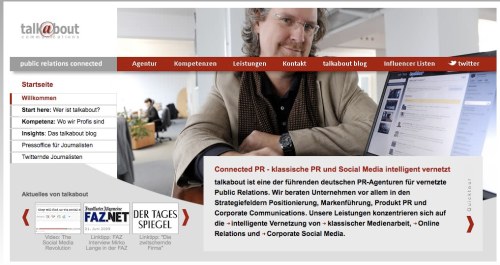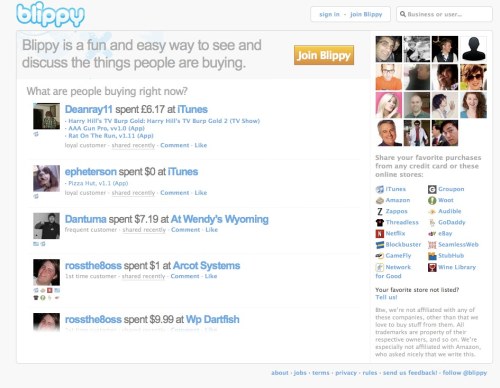
I blog, therefore I am?
Steve Rubel is SVP, Director of Insights for Edelman Digital, and a social media and marketing thought leader. I respect him tremendously. But when interviewed recently by Shel Holtz and Neville Hobson on their podcast For Immediate Release, he said something that disturbed me profoundly. He mentioned that he had given up his standard blog and was now only micro-blogging. The reason, he said, was that people no longer have the time to read.
He’s wrong. It’s not that people no longer have the time to read. It’s that they no longer have the desire to read. Because they don’t think it’s important. That’s disturbing.
But what’s even more disturbing is the apparent readiness of thought leaders in social media to accept this fact and by words and deeds to further encourage it. When instead they should be leading the discussion that this is something we should perhaps be concerned about.
Why be concerned?
Because ideas, analysis and opinion usually require more than 140 characters. Because a successful society needs a citizenry that can think, and evaluate the validity of an argument. I’m not saying that every member of the population needs to make The Journal of Foreign Affairs his or her favorite Sunday afternoon reading. But I do think the greater the number of people who are at least capable of reading an article in The New York Times from start to finish, without becoming confused or disinterested, the better it will be for our country and the world in general.
Democratization of the creation and distribution of information is great, but what good is it if we’re creating a generation of information consumers that is intellectually incapable of separating the informational wheat from the chaff?
Unfortunately, by word and deed, there’s much that goes on in the web 2.0 world that I’m concerned may be breeding a generation of dummies.
Words and deeds that bother me
Our infatuation with all things visual vs. written word
Don’t get me wrong. I love YouTube as much as the next man. But although pictures may speak louder than words, they don’t necessarily speak more intelligently. My concern has less to do with video itself – after all, there is fantastic video content on TED Talks – but that so much video favors the superficial, the snackable. With people becoming seduced by the endless amount superficial, snackable video out there, they are developing an appetite for content, and only for content, that is the intellectual equivalent of cotton candy. And soon their systems won’t be capable of digesting anything else. The philosopher said Cogito ergo sum — I think, therefore I am, not I snack, therefore I am.
I also believe, though I have no scientific evidence to prove it, that there is a greater depth of involvement with information when we take the time and apply the concentration required to read something. We also may stop, and ponder a paragraph, before reading further, which we’re less likely to do when watching video.
Our obsession with churning out content – twitter posts, blog posts, comments – for the sake of our Google juice
Does anyone talk about quality vs. quantity anymore? We’re all suffering from information overload. But the sad thing is that a good deal of the overload is sifting the garbage from the stuff worth engaging with. How about posting a little less, and thinking a little more?
Giving in to the lowest common denominator
This is what Steve Rubel has done. And when a thought leader like Steve does it, it’s doubly concerning. It’s what the TV network news stations did two decades ago, turning organizations that had formerly helped to inform and intellectually empower a nation into a mirror in which the nation’s most unflattering features were merely reflected.
The dismissal of learning for learning’s sake
Lately I’ve heard buzz among social media “thought leaders” about the worthlessness of a college education. “Nothing that I learned in college prepared me for what I do to day.” The first thing I would say to that is, if most of what you’re doing today are the kinds of things I’ve written about above, then that reflects more poorly on you than your college education.
I would agree that there is much I learned in college that is no longer relevant to what I do today. But the most important things I learned are more relevant than ever. I learned how to think, I learned the importance of investigating opposing points of view, I learned critical analysis, and I learned to value intellectual integrity.
And as far as the “no longer relevant” things are concerned, that’s beside the point. College was a time of exploration and discovery, of things I might learn and become, and things I wouldn’t. I am thankful that I had that opportunity, an opportunity many never have the privilege to enjoy.
What we can do?
Well for one, we can start talking, as I am in this post. And encourage further conversation. The more we talk and discuss, the more this discussion will spread. And if it even gets one person to start thinking about the importance of getting a complete picture on an issue, reading different points of view about it, or in general just taking the time to read and be exposed to different ideas and perspectives, and thinking critically and thoroughly about stuff – well that’s a good thing.
I wish more of us would resist the temptation to post, post, post – flooding the blogosphere, Twittersphere etc. with endless streams of information, half of it bogus, self-promoting, superficial or simply spam. Post when you have something useful to say, or found something that you have taken the the time to read and come to a conclusion as to whether it’s really worth spreading or not. If not, use that time posting for something more worthwhile — like reading.
Break free from you own compulsion to read and follow everything and everyone. My God, how can you possibly follow more than a few hundred people on Twitter and not feel overwhelmed. Be selective, be critical, take the time to really read what people are sharing with you and make decisions about which of those people are really worth hearing from.
Keep blogging, and podcasting, not just micro-blogging. Big ideas, themes and points of view require more than 140 characters. If all we feed our audiences is the equivalent of intellectual cotton candy, then we are accessories to the crime of turning their minds into mush.
Finally, talk about this. Share your thoughts with others. The more people talk about this, the more we can help to create a web 2.0 culture that still values quality of thought and writing, intellectual discipline and integrity, and validation of sources, facts and information. And to cultivate a web 2.0 community that doesn’t simply surf, snack and spread, but thinks, analyzes and informs.













